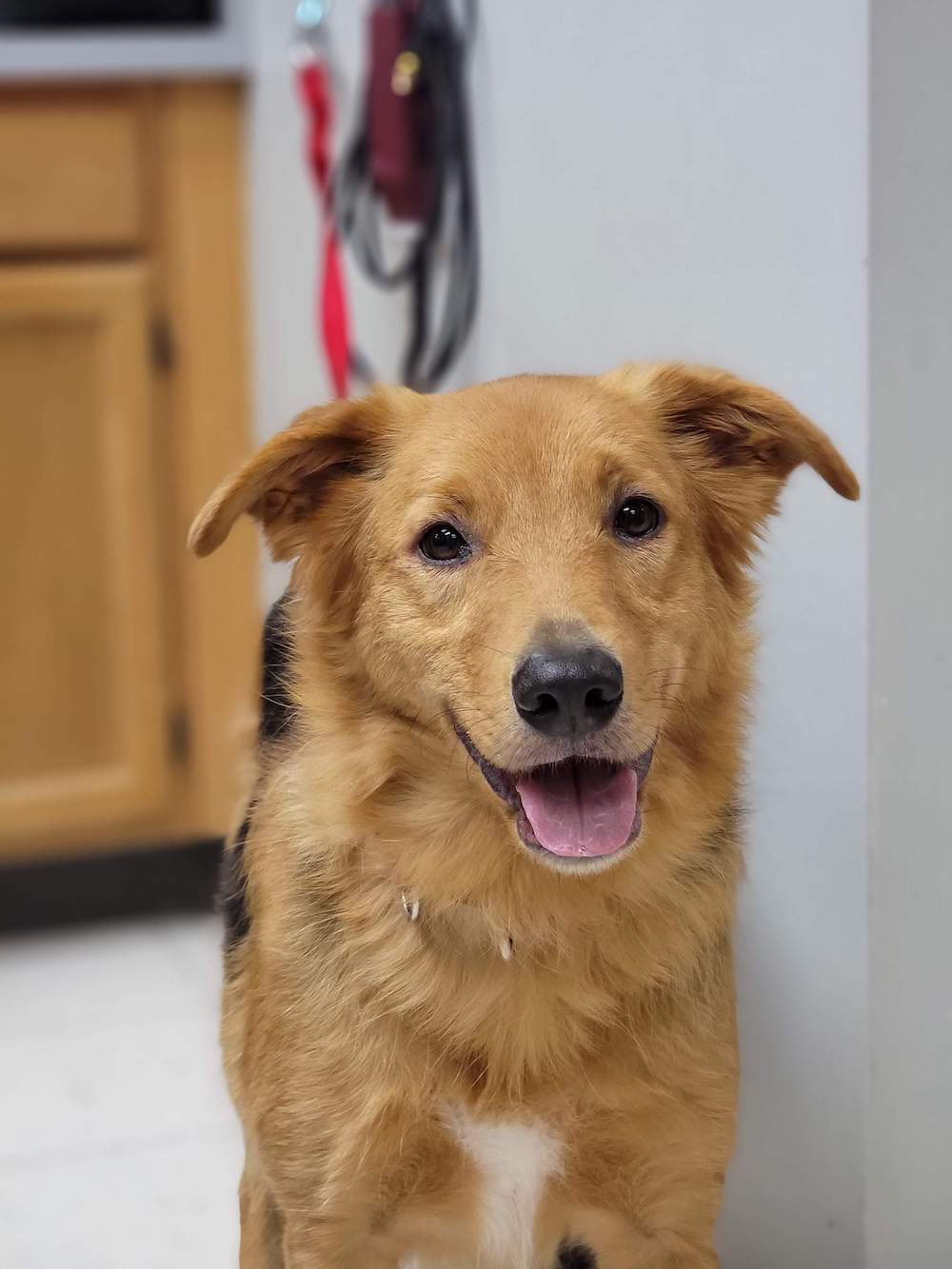What You Need to Learn About Vet Providers: A Review of Diagnostic Devices and Procedures
Vet solutions play a vital function in preserving the health of family pets. Regular exams can reveal concealed health and wellness concerns beforehand. Various analysis devices and procedures, such as blood tests and imaging strategies, provide important understandings right into a pet's wellness. Understanding these techniques is essential for animal proprietors. What particular diagnostic procedures are most generally used, and exactly how can they influence a family pet's treatment plan?
Relevance of Normal Vet Check-Ups
While lots of pet owners might undervalue the value of regular veterinary exams, these visits are important for keeping a pet's total health and wellness. Regular visits to the veterinarian enable very early detection of potential health and wellness problems prior to they intensify right into serious problems. Routine examinations often consist of inoculations, which are important for protecting against contagious diseases that could drastically impact a family pet's wellness. Furthermore, these visits give an opportunity for veterinarians to assess the pet's weight, dental health and wellness, and general condition, guaranteeing that the family pet is growing. Throughout these check outs, family pet proprietors can likewise get valuable advice on diet, workout, and preventative treatment customized to their certain family pet's requirements.
Common Diagnostic Treatments in Vet Medication
In vet medicine, precise diagnosis is necessary for effective therapy. Typical diagnostic procedures consist of blood screening methods, advanced imaging technologies, and urinalysis, each playing a significant role in identifying health concerns. Recognizing these approaches enhances the capacity to supply ideal care for pet individuals.
Blood Examining Strategies
Blood testing techniques offer as crucial diagnostic devices in veterinary medication, allowing vets to evaluate the health of pets accurately. These techniques involve gathering blood samples to examine various components, such as white and red blood cells, platelets, and biochemical markers. Usual tests consist of total blood counts (CBC), which assess total health and detect infections, and biochemical panels, which examine organ function and metabolic standing. Additionally, serological examinations can recognize certain diseases with antibody detection. Blood screening is minimally invasive and gives vital information that helps in detecting problems, keeping an eye on health condition, and assessing feedbacks to treatments. In general, these methods play a vital function in making certain optimal treatment for family pets and livestock alike.
Imaging Technologies Used
Diagnostic imaging innovations are crucial devices in veterinary medicine, matching blood testing strategies by providing visual insights into an animal's interior frameworks. Usual imaging methods consist of X-rays, which are valuable for evaluating bone fractures and finding international items, and ultrasound, which permits real-time visualization of soft cells and body organs. Magnetic vibration imaging (MRI) uses detailed photos of complicated anatomical areas, particularly in neurological evaluations. Calculated tomography (CT) provides cross-sectional photos, improving diagnostic precision for various problems. Each of these modern technologies aids vets in identifying ailments, preparing therapies, and keeping an eye on healing. By integrating imaging innovations, veterinary professionals can better assess an animal's wellness and make informed decisions concerning their treatment.
Urinalysis and Diagnostics
Urinalysis works as a crucial diagnostic device in vet medicine, supplying useful insights into an animal's total health and assisting in the detection of various problems. This non-invasive procedure examines urine examples to examine kidney feature, hydration condition, and metabolic disorders. Common components examined consist of certain gravity, pH levels, sugar, proteins, and the presence of blood or germs. Unusual searchings for can suggest concerns such as urinary system infections, diabetes mellitus, or kidney condition. To improve diagnostic precision, urinalysis is usually done along with various other tests, such as blood job and imaging research studies. Early discovery through urinalysis can result in timely interventions, improving the prognosis for numerous vet patients. It is a vital aspect of comprehensive veterinary care.
Understanding Blood Examinations and Research Laboratory Evaluation
Recognizing blood examinations and research laboratory evaluation is vital in veterinary medicine as it helps in diagnosing different wellness conditions in animals. Different sorts of blood tests give crucial details about an animal's interior state, while analyzing laboratory results calls for cautious consideration of numerous aspects. This section will certainly discover the kinds of blood tests readily available and the importance of their results.
Types of Blood Examinations
Blood examinations play a crucial role in vet medication, supplying necessary understandings into a pet's health and wellness standing. Different sorts of blood examinations are utilized, each serving various functions. Total blood counts (CBC) assess overall wellness and discover conditions such as anemia or infection. Biochemical profiles evaluate body organ function by determining electrolytes and enzymes, offering insights into metabolic health and wellness. Serological examinations recognize particular antibodies or pathogens, aiding in the medical diagnosis of infections or autoimmune illness. Blood keying assurances risk-free transfusions, while coagulation tests assess the blood's capacity to embolisms, essential for procedures. These tests jointly enhance medical diagnosis, treatment preparation, and tracking of an animal's health and wellness, illustrating the significance of detailed laboratory analysis in vet treatment.

Translating Lab Results
A comprehensive evaluation of lab outcomes is vital for accurate diagnosis and treatment in veterinary medicine. Analyzing lab results calls for an understanding of normal recommendation varieties and the relevance of variances. Blood tests can disclose various health and wellness indicators, such as organ function, electrolyte balance, and the presence of infections. Veterinarians must think about the whole scientific picture, consisting of the animal's history, health examination searchings for, and any symptoms presented. Variations in outcomes may occur from factors such as age, breed, and underlying health problems. Subsequently, lab outcomes ought to not be watched in isolation but rather as component of an all-encompassing diagnostic strategy. Accurate interpretation permits tailored treatment plans and browse around this web-site better results for vet patients.
Imaging Techniques: X-rays, Ultrasounds, and Beyond
Imaging strategies are necessary tools in vet medicine, offering vital understandings right into the health and wellness of pets. Amongst one of the most commonly utilized techniques are X-rays and ultrasounds. X-rays are very useful for imagining bone frameworks, assisting veterinarians recognize cracks, lumps, or foreign objects. This approach is quick and non-invasive, making it ideal for urgent situations.Ultrasounds, on the other hand, make use of acoustic waves to create pictures of soft tissues and organs. This method is particularly beneficial for taking a look at the heart, abdominal area, and reproductive body organs, enabling veterinarians to examine problems like fluid buildup or body organ abnormalities.Beyond X-rays and ultrasounds, advanced imaging methods such as computed tomography (CT) and magnetic resonance imaging (MRI) are increasingly made use of in veterinary method. These methods provide thorough cross-sectional photos, improving the precision of diagnoses and therapy strategies. Board Certified Veterinary Cardiologist. Generally, imaging techniques play an essential role in making sure reliable veterinary care
The Role of Biopsies in Diagnosing Family Pet Wellness Issues
Precision in detecting browse around these guys health concerns in animals usually hinges on making use of biopsies, which give clear-cut information about tissue irregularities. A biopsy includes the elimination of a little example of cells for evaluation under a microscopic lense, enabling vets to identify various problems, consisting of infections, lumps, and inflammatory conditions. This analysis device is necessary for comparing malignant and benign developments, assisting therapy choices, and evaluating the intensity of a condition.Biopsies can be done utilizing numerous strategies, such as needle goal, incisional biopsies, or excisional biopsies, depending on the area and kind of cells involved. The choice of technique might affect recovery time and the amount of cells accumulated. Inevitably, the info amassed from a biopsy can cause targeted therapies, enhancing results for pets dealing with serious health challenges. Vets stress the relevance of this procedure in attaining accurate diagnoses and efficient therapy plans.
Advanced Diagnostic Equipment: Endoscopy and CT Checks

Advanced analysis tools, such as endoscopy and CT scans, play an essential role in contemporary vet medicine, providing non-invasive methods to envision interior frameworks and diagnose different problems in pets. Endoscopy involves making use of a versatile tube furnished with a video camera, allowing vets to examine the intestinal tract and respiratory system directly. This strategy can expose problems such as lumps, international bodies, or inflammation, enabling targeted treatment plans.CT scans, on the other hand, use innovative imaging modern technology to develop in-depth cross-sectional photos of the body (Cancer Veterinary Near Me). This technique is specifically valuable for evaluating complex frameworks like the mind, spine, and joints. By offering high-resolution photos, CT scans help vets in determining problems that might not be evident with standard radiography. With each other, these advanced devices enhance analysis accuracy, improve therapy outcomes, and ultimately add to much better overall family pet health management

Translating Test Results: What Animal Owners Should Know
Comprehending test results can be a tough job for family pet owners, particularly after advanced procedures like endoscopy and CT scans have been carried out. Translating these outcomes calls for an understanding of medical terminology and a clear understanding of what you can look here the searchings for indicate about the pet dog's wellness. Veterinarians frequently supply descriptions, however the intricacy of the results can still cause confusion.Pet proprietors should actively participate in conversations with their veterinarians, asking questions to clear up any kind of unpredictabilities. It is important to understand uncommon versus regular results and the implications for the pet dog's treatment strategy. In addition, recognizing that some results may require further testing or tracking can assist owners remain informed concerning their pet's wellness journey. Eventually, a collaborative approach between pet owners and veterinary specialists fosters better health end results and improves the total care experience for pets.
Often Asked Concerns
How Do I Choose the Right Veterinary Center for My Animal?
Selecting the appropriate veterinary clinic involves researching local options, examining certifications, seeing centers, and evaluating team communications (CT Scans For Animals). Focusing on suggestions from relied on resources can assist ensure the most effective care and environment for an animal's health needs
What Should I Do if My Pet Dog Rejects to Go to the Veterinarian?
When an animal rejects to visit the vet, it's a good idea to continue to be calm, usage deals with or toys to attract them, and take into consideration arranging a home see if anxiety persists. Patience and positive reinforcement are essential.
Exist Telehealth Options for Veterinary Services?
Telehealth alternatives for veterinary solutions are significantly readily available, enabling family pet proprietors to consult with veterinarians from another location. These solutions enable conversations regarding health concerns, advice on minor conditions, and follow-ups without needing to see a center.
Just how Commonly Should My Pet Dog Have Oral Check-Ups?
The regularity of oral exams for pet dogs normally depends upon their age and type. Typically, vets advise annual dental assessments, although some pet dogs may require even more regular sees to maintain ideal oral wellness.

What Are the Expenses Associated With Veterinary Diagnostics?
The prices linked with vet diagnostics can differ extensively, usually varying from standard examinations like blood work to innovative imaging methods. Factors influencing costs include the clinic's place, equipment utilized, and specific tests required for every pet. Veterinary solutions play a crucial function in keeping the wellness of pets. While several pet owners may take too lightly the significance of regular vet check-ups, these visits are crucial for maintaining an animal's total health and wellness. Furthermore, these consultations provide a possibility for veterinarians to analyze the animal's weight, oral health, and total condition, guaranteeing that the animal is flourishing. Accuracy in detecting health problems in pet dogs frequently pivots on the usage of biopsies, which provide definitive information concerning tissue irregularities. Furthermore, acknowledging that some outcomes might need more testing or monitoring can assist owners remain notified concerning their animal's health trip.